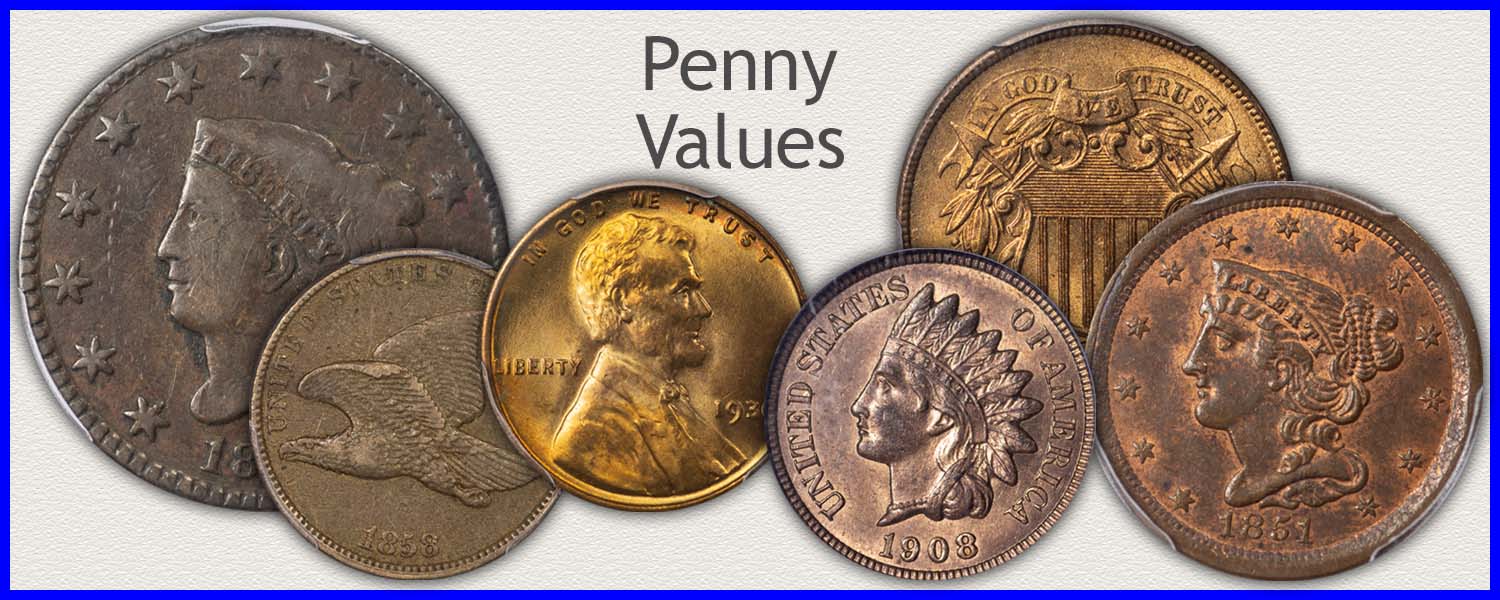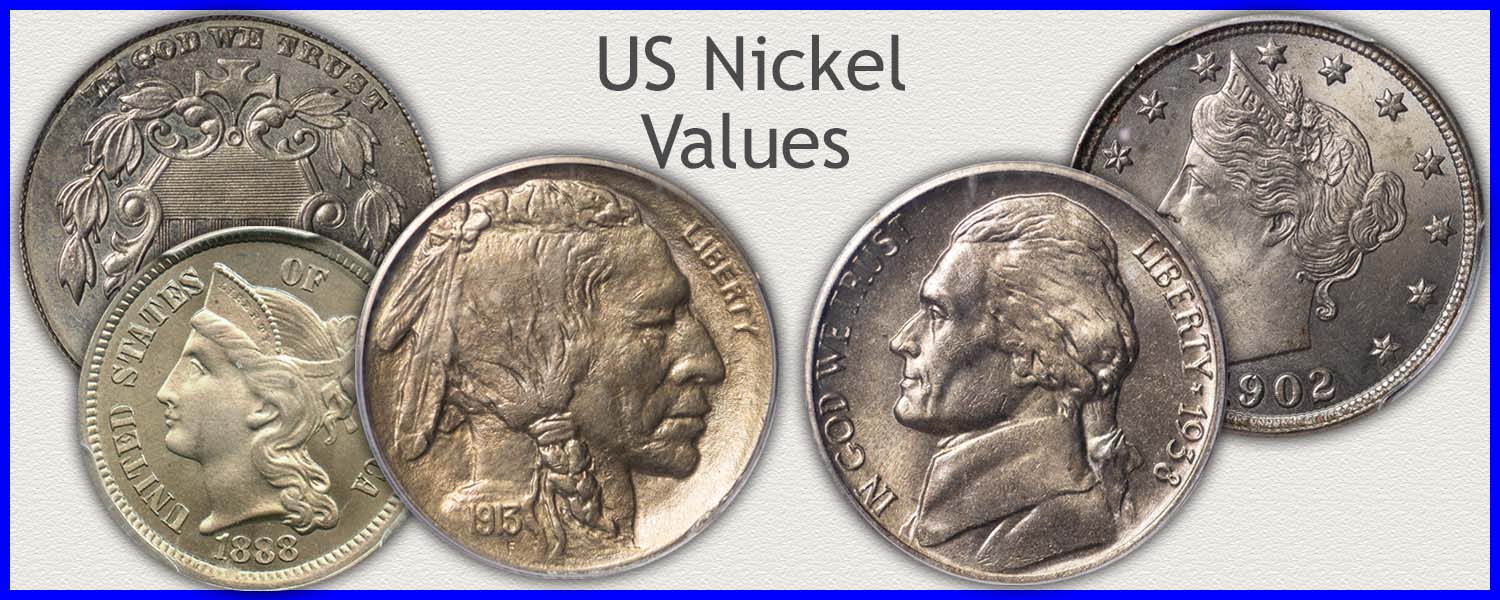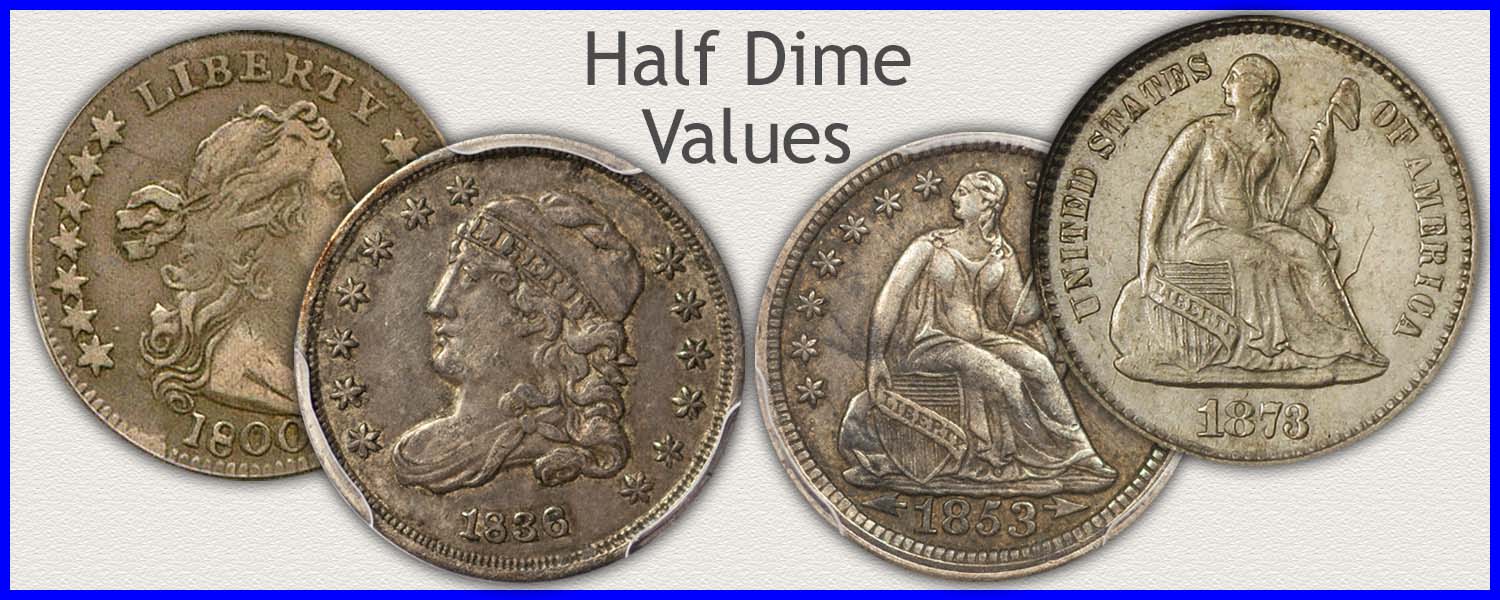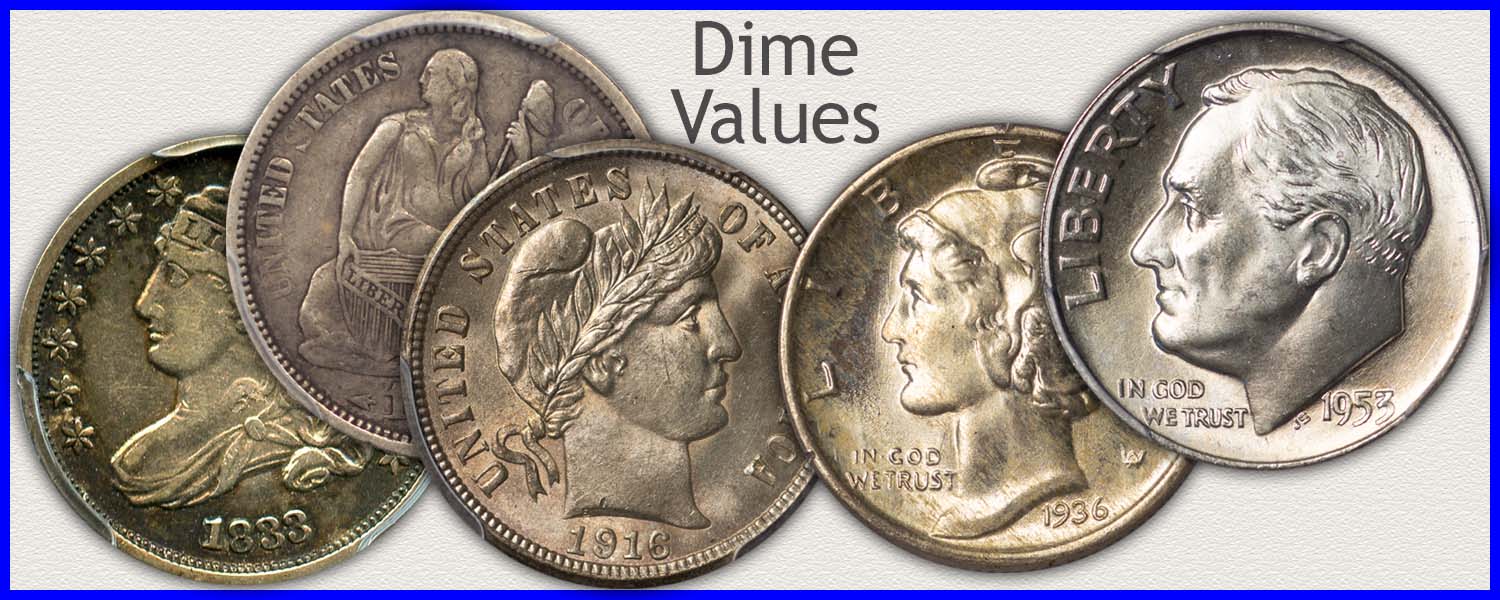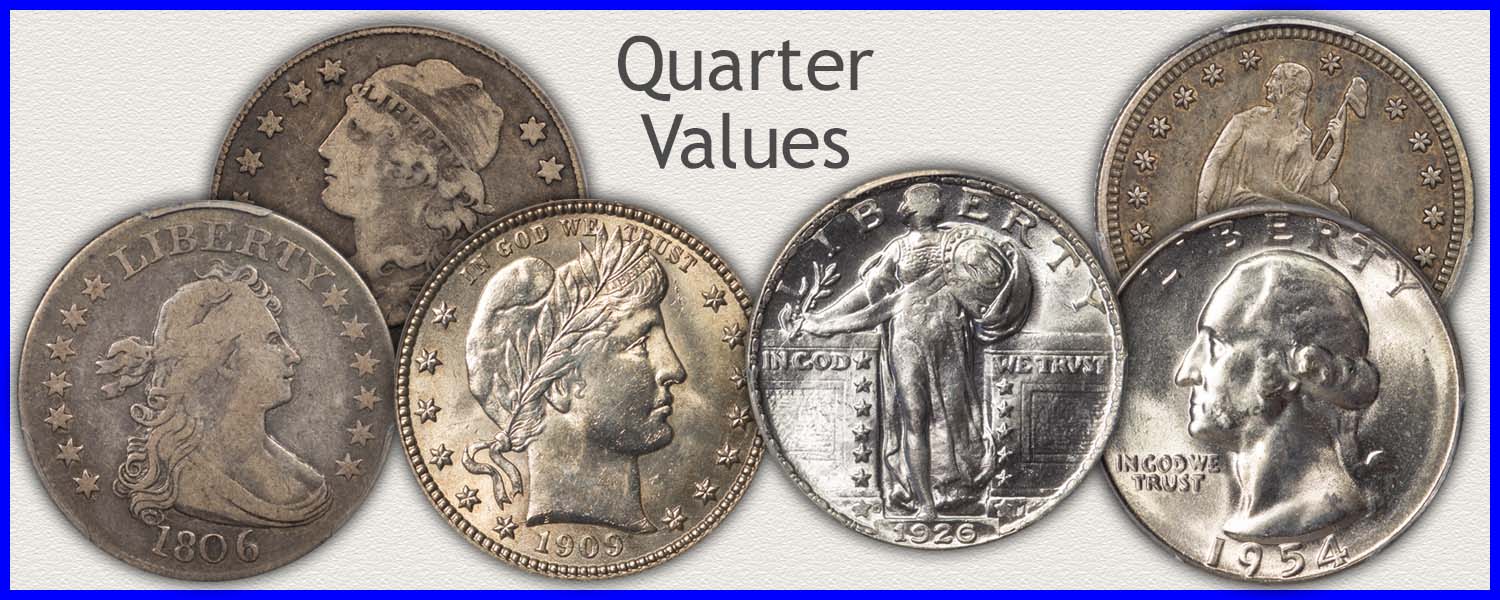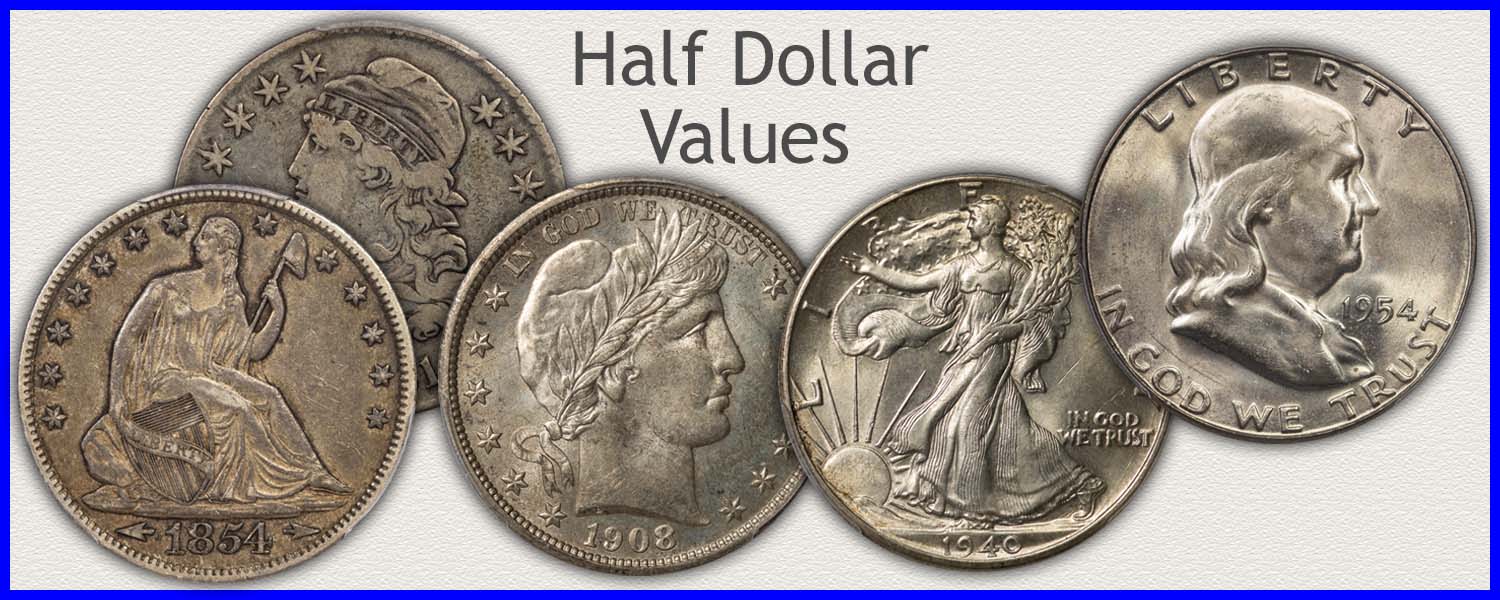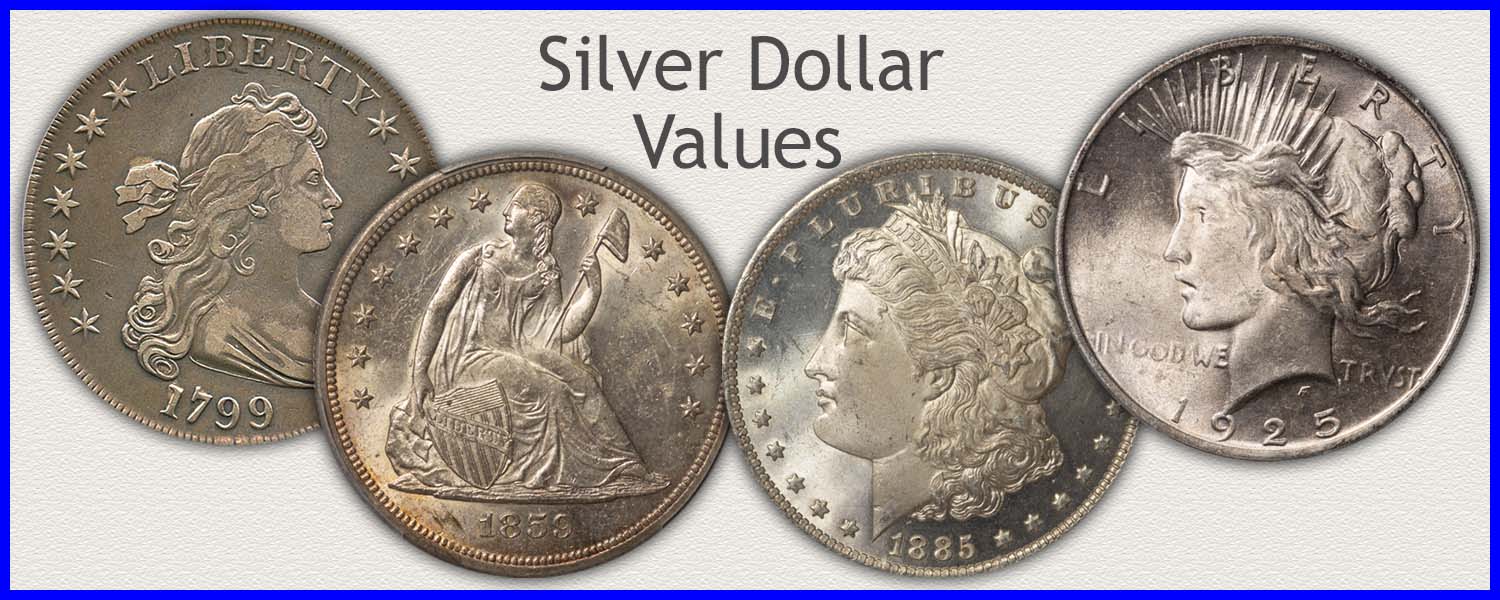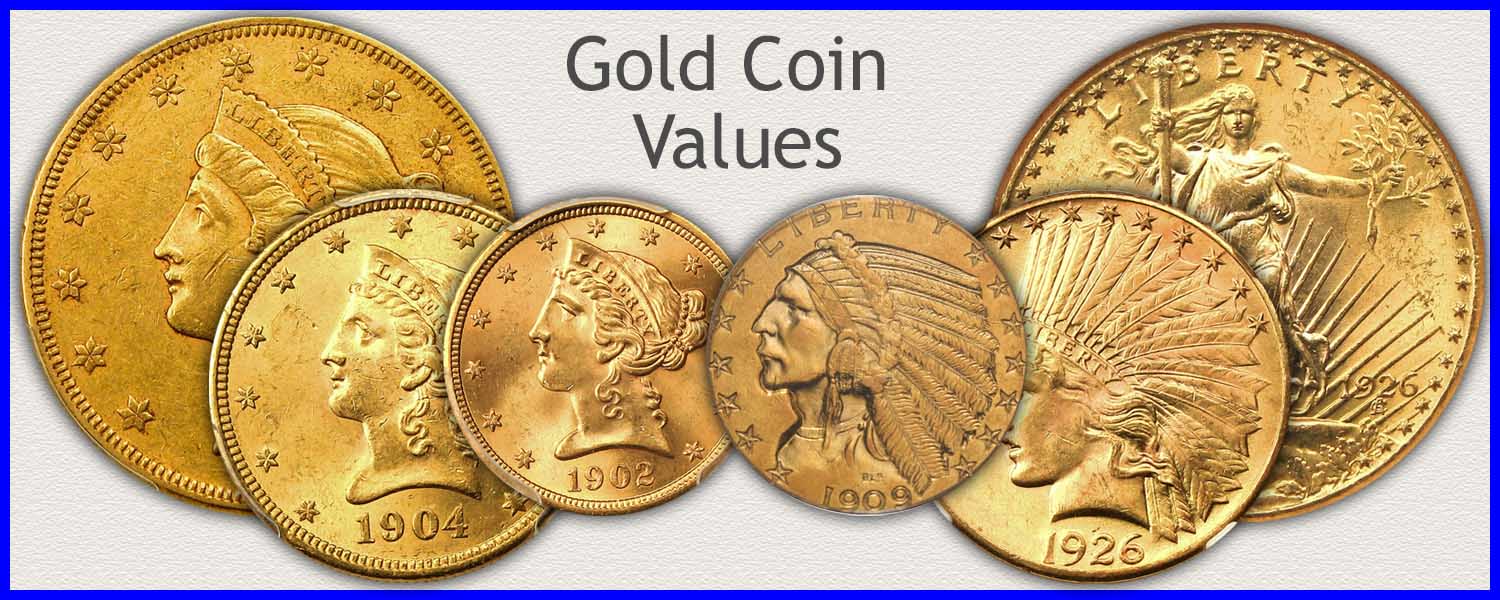Coin Values Moving with Precious Metals: Up-Dated 12/8/2025: Gold $4212 | Silver $58.12
Old Coin Values are Surprising
All old coin values listed; and most will surprise you. From the common to the rare. Coins have steadily climbed higher in value. Look no farther than your box of old coins for an exciting treasure hunt.
A step by step method is used to evaluate each coin in detail.
Steps Leading to Old Coin Values:
- Step 1: Recognize the Different Series of Coins - Design changes often occur during a minting year. New to old series are valued separately, each is listed.
- Step 2: Date and Mintmark Variety - Within series, dates become important to collectors, along with mintmark combination. Ranges of scarcity and demand are identified.
- Step 3: Grading Condition - Judging condition is done with a close inspection and comparing to standards for the grade. Each series has its own grading section.
- Step 4: Special Qualities - Old coins because of age, metals involved, and changing minting processes, each have qualities to identify. Awareness of a few key qualities adds to the assessment.
Follow these steps for each coin to greatly increase proper evaluation.
Step 1: | Recognize the Different Series of Coins
Coins are grouped by denomination with the major series represented in the images. Information specific to the series is found by following the tap/click image link.
Below the images - Step 2 continues: Understanding the importance of identifying date and mintmark combinations.
Step 2: | Date Plus Variety and Mintmarks are Identified
Dates of each coin is confirmed first. Collections of coins are organized primarily by date within a design series. An accurate date identity is a must. A Lincoln cent minted in 1914 is considered scarce and recognized separate of a 1944 cent, with a value difference.
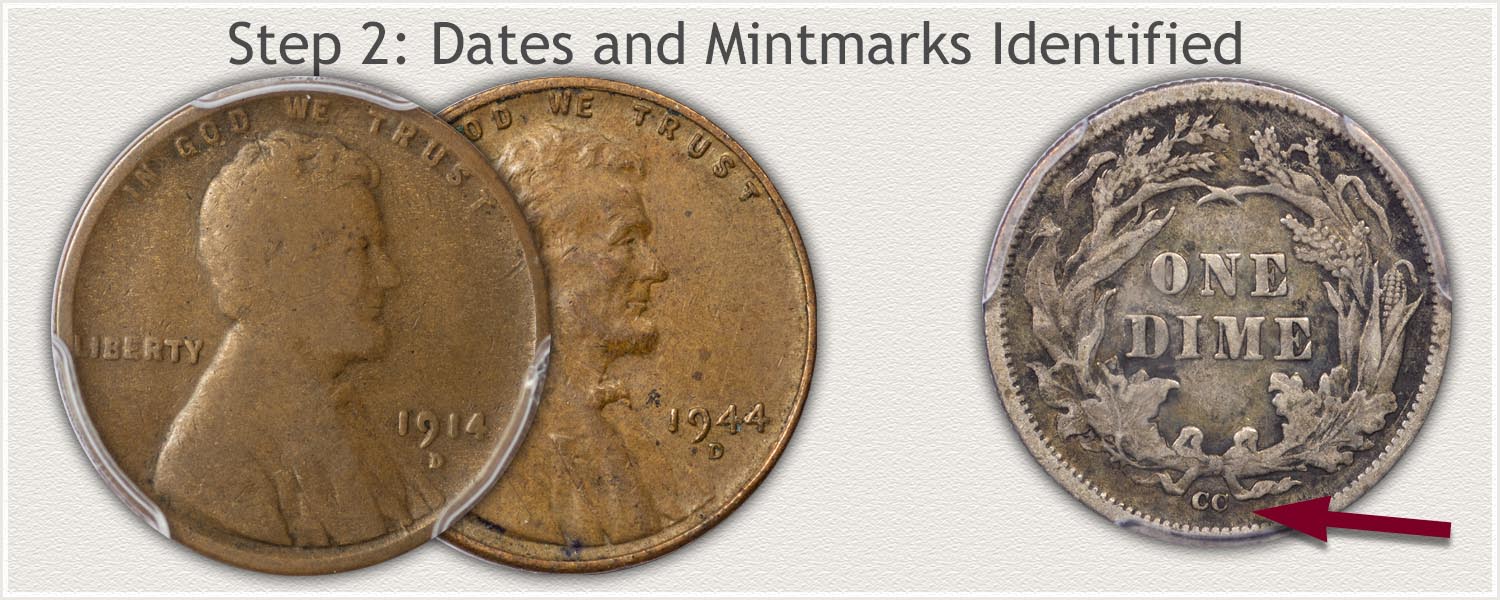
Mintmarks are next considered. Philadelphia mint is the original and primary mint of the US with coinage beginning in 1793. Branch mints were added across the country overtime and each placed a mintmark on coins to indicate their production. For example, the Denver mint places a "D" mintmark on all coins it strikes. The dime represents the very popular "CC" mintmark of the Carson City mint.
Today, coins are collected by date and mintmark combination. Each mintmark variety having different original mintages, availability, and demand, depending on the series. 1914 Lincoln pennies were minted at both Philadelphia and Denver. The Denver coin is the scarce variety because of low mintage and identified by the "D" mintmark under the date.
🔎 In Step 1: Images link to pages going into detail identifying mintmarks and their locations.
Step 3: | Grading Condition | Old Coin Values are Conditional
Condition: Now begins an important part to the value of old coins. Judging and Grading the condition of the coins' surface. When first minted a coin has no wear to the surface. When used and circulated through commerce, parts of the design begin to wear down and loose detail. Different stages of wear are defined by a Grade. The grade and definition of a coin without wear is; Mint State Grade.
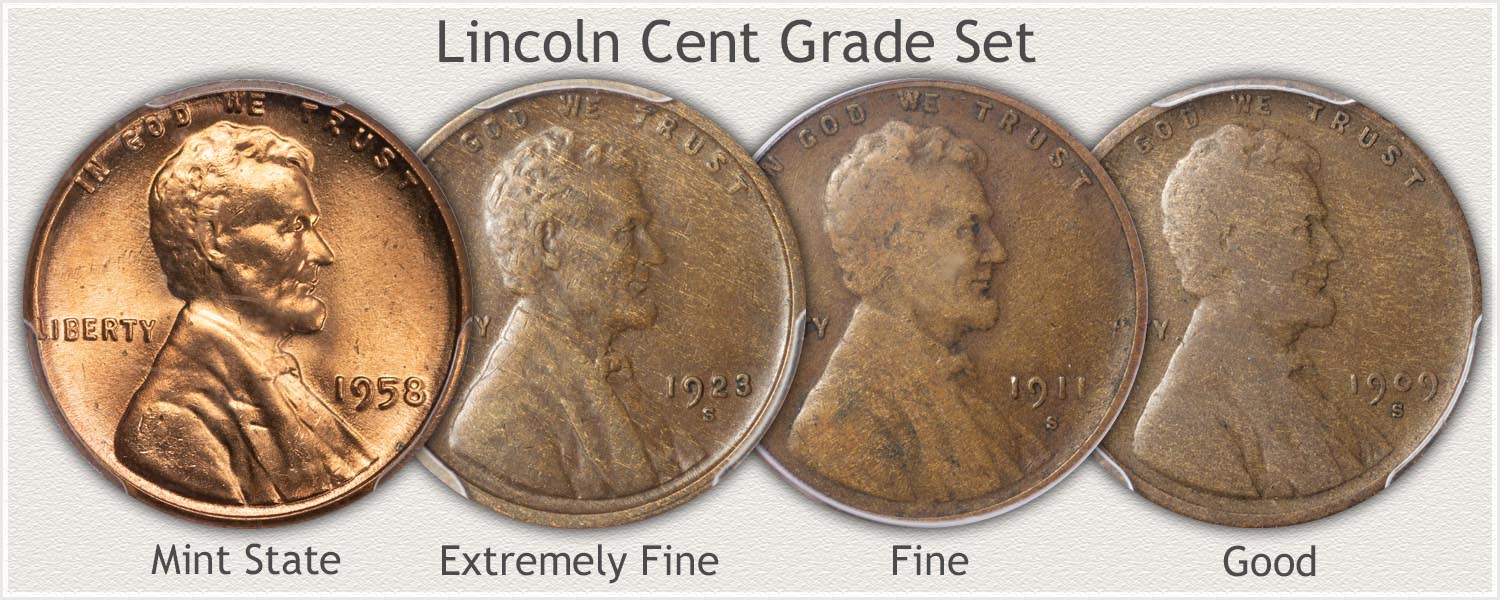
First penny in the image is the Mint State Grade. No wear to the surface. Key parts of the coin are examined to confirm absence of wear. On Wheat cents, Lincoln's cheek remains without any dulling or smoothing from wear.
Next, Extremely Fine Grade: Light wear only, with just slight removal of high points of the design defines a coin in Extremely Fine Grade. Look closely at Lincoln's hair, only minor wear shows.
Fine Grade: Coins with moderate wear are defined as Fine grade. Major parts of the design are well detailed, small high relief areas are smooth. The example penny show flatness on Lincoln's cheek and jaw line. Notice there remains contours separating the temple, cheek, and jaw.
Good Grade: Once heavy wear has removed most of the design, a coin is judged and defined within the Good Grade. In the example, Lincoln remains well outline, however, only small portions of hair, face, and coat show any small details.
Collectors inspect each coin very closely. Amount of wear is a major difference in values represented on the charts. Images, video, and descriptions are used to compare your coin and help narrow both the condition and value.
🔎Each coin design has its own features to judge and determine grades. In Step 1 above, follow the image links to each coin series and in-depth grading.
Step 4: | Special Qualities Enhancing Value
Collecting coins is a visual as well as a historical pursuit. US coins date back to the beginnings of the country; its exploration and settlement. Rising and falling mintages alone reflect the changing commerce throughout history.
The coins themselves are the visual enjoyment, miniature works of art. Collectors find fascination in the different designs and symbolism as well as the different alloys of US coinage. An example is the 1833 Half Cent pictured.
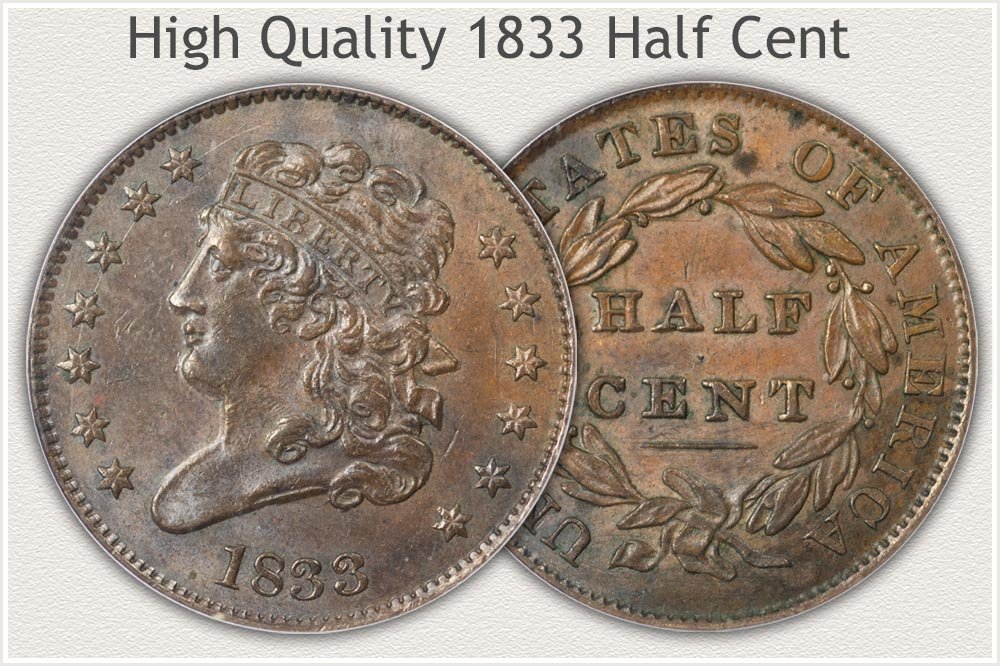
Historically, the 1833 half cent is dating from a colonial way of life. Aesthetically, the coin is well preserved and very appealing. Its special quality is the state of preservation. Very old copper coins are susceptible to many problems lowering eye appeal. Half cents are all scarce today and its advanced age combined with its pleasing appearance sets it far ahead of many other copper coins. A special coin, handled with care since 1833, a rarity. Value placed on this coin is solid because of these qualities.
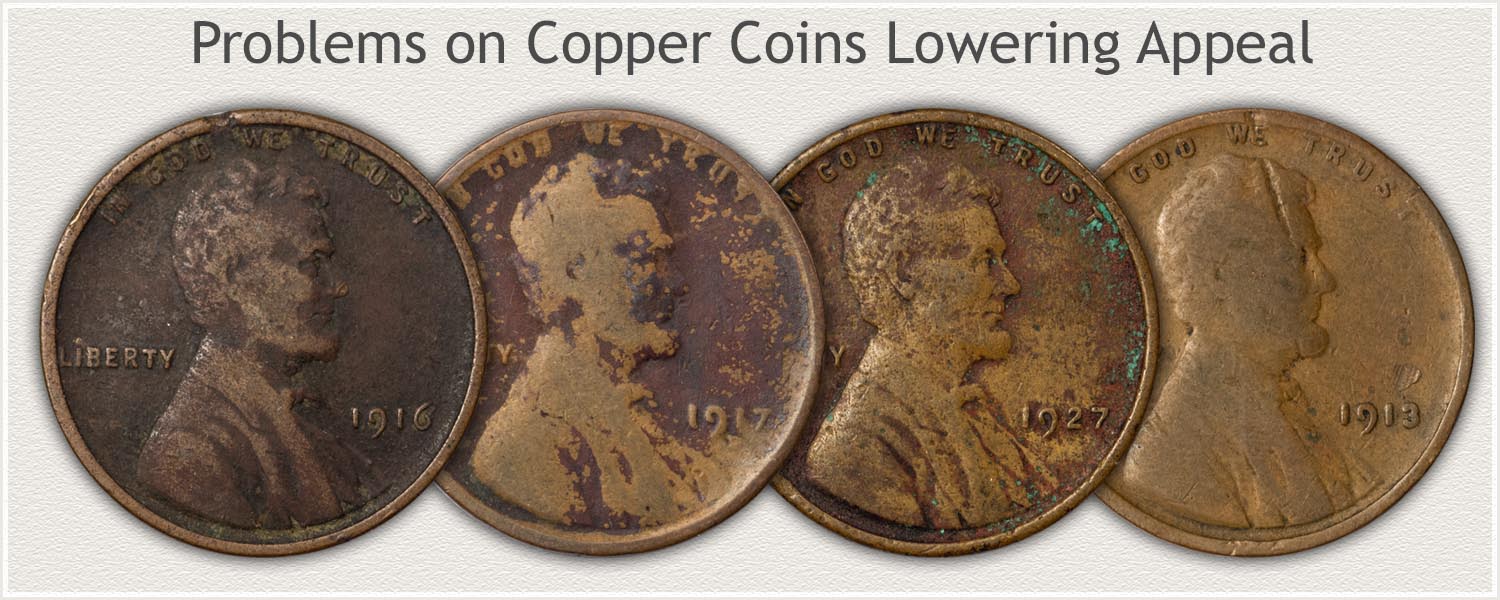
In the row of Lincoln cents are many of the problems that easily affect copper coins. Dark toning is the natural state of very old copper when not protected. Discoloration easily accrues because of moisture. Verdigris - the green coloration - damages the surface by pitting. Large marks are part of moving through everyday circulation.
Old US coins were minted in many alloys of metal, different sizes and denominations. Each series covers special qualities unique to the coin, metal, design complexity, and age.
🔎Match your coin to the image links in Step 1 and visit; in-depth old coin values. Special qualities are part of judging each coin.
Coin Values | CoinStudy Articles
Coin values are influenced by denomination and design series popularity. Large numbers of collectors create demand showing in premiums paid for coins. Collecting interests are ranked on charts by denomination and series.
Grading Old Coins || Video Index
Video index of how to grade coins. Series of coins from Indian and Lincoln cents through the different nickel series, dimes, quarters, half and silver dollars. Each series is studied using grading videos, images and descriptions to judge the condition and assign a grade.
Tips for Locating Antiques and Relics with a Metal Detector
Guest Contributor Michael Bernzweig shares his expertise in metal detecting. Make it a fun outing with family and friends and increase your chances of finding old coins and artifacts using a metal detector.
Introduction into the selling coins process. Preparing, organizing, and planning to improve results.
Print the Coin Values Worksheet to list your coins and record their values. Should you decide to sell... use the worksheet as an invoice and packing slip when sending coins through the mail to dealers. It indicates you have done your coin values homework.
★Coin Values Discovery finds Old Coin Values and...
All old US coin values. The home page is an excellent index, quickly leading to the major coin series. From Cents to Gold. Easily sort and value your coins. Proceed through the step by step method and identify your box of old coins.
